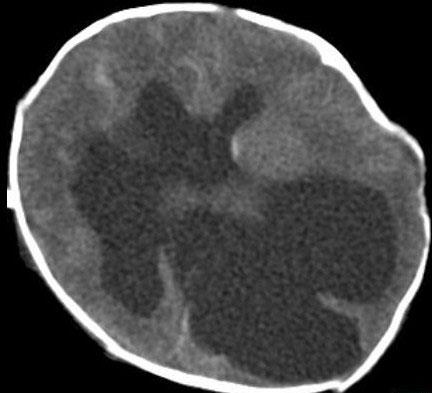The brain and spinal tissues lie protected in a nutrient rich pool of protective fluid known as cerebrospinal fluid (CSF). The mechanisms that the body uses to ensure that all conditions, including pressure remain reasonably constant are highly sophisticated, but as Paediatric Neurosurgeon, Mr Christopher Chandler, explains "Any process that physically blocks the movement of CSF from one chamber to another or prevents CSF from being reabsorbed into the circulation can result in an abnormal accumulation of CSF. Hydrocephalus may present with a progressive rise in the intracranial pressure and, if not treated, has the potential to cause severe brain damage or even death."
This is naturally particularly important in babies, and the symptoms of hydrocephalus can be confusing, so the King's College Hospital Consultant has provided a useful, plain English guide. So what needs to be looked out for?
-
Excessively large head

- Head circumference measurement that is accelerating abnormally fast
- Decreased level of consciousness
- An anterior fontanelle that is tense and bulging
- New onset squint
- ‘Sunsetting’ eyes (unable to look upwards)
There are also other less specific symptoms and symptoms may be different in older children - please click here for further information, or to arrange an appointment with a specialist doctor for hydrocephalus, click here.



